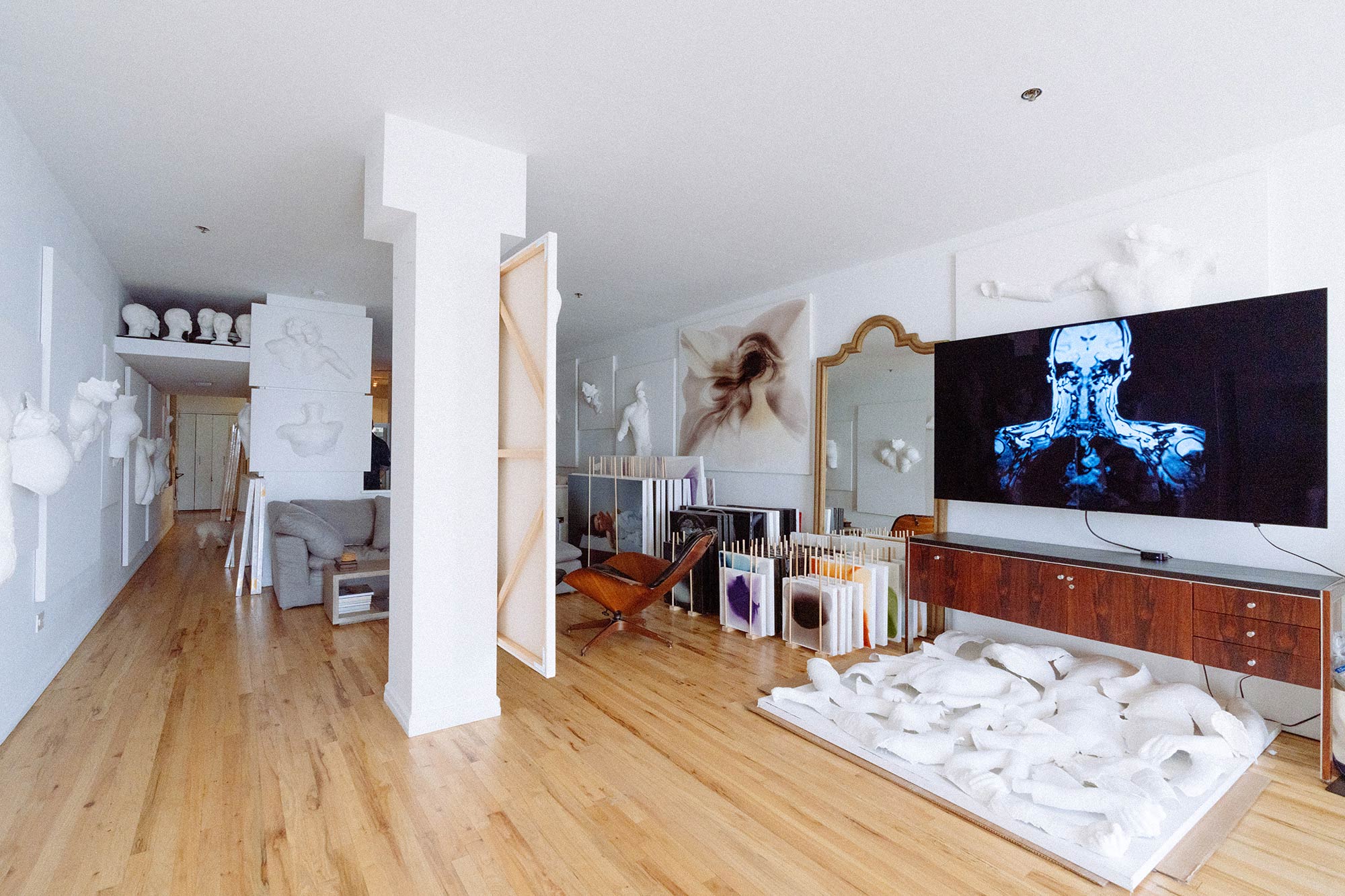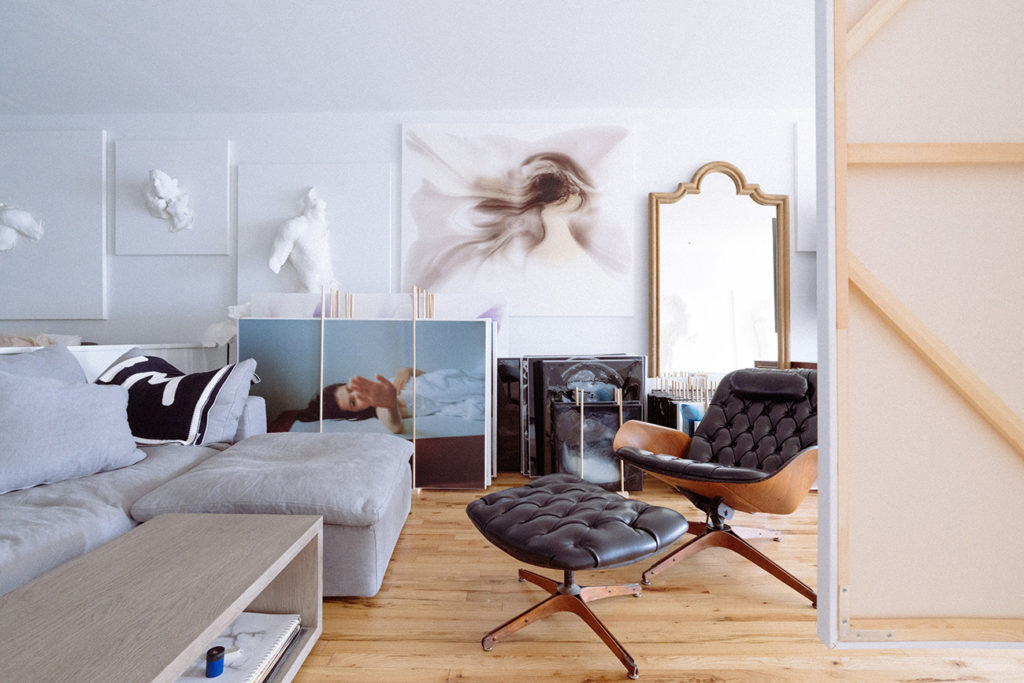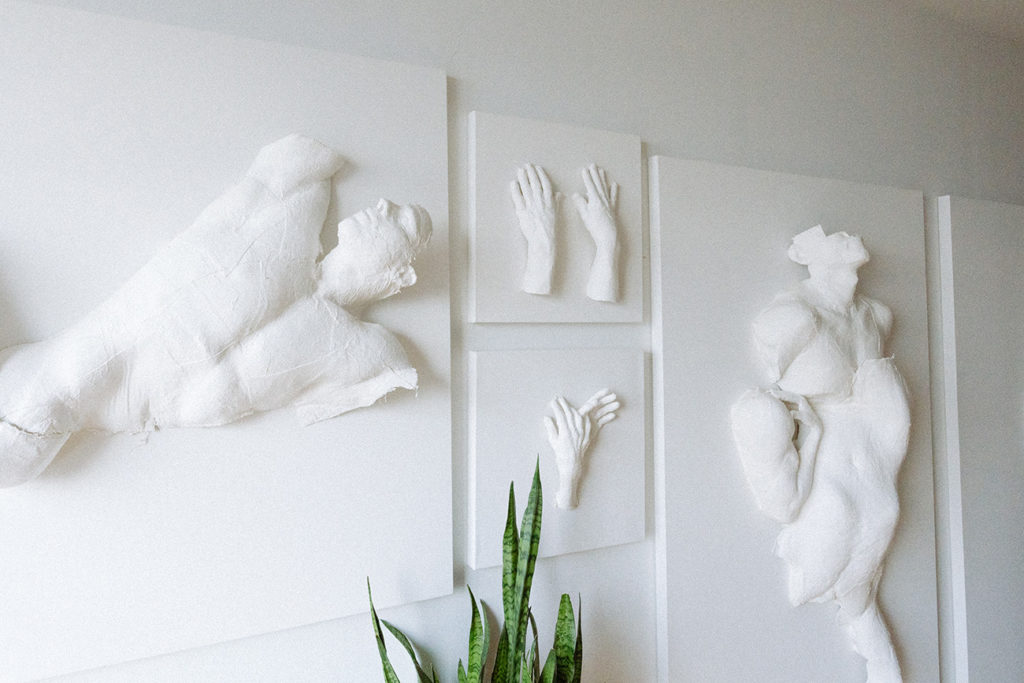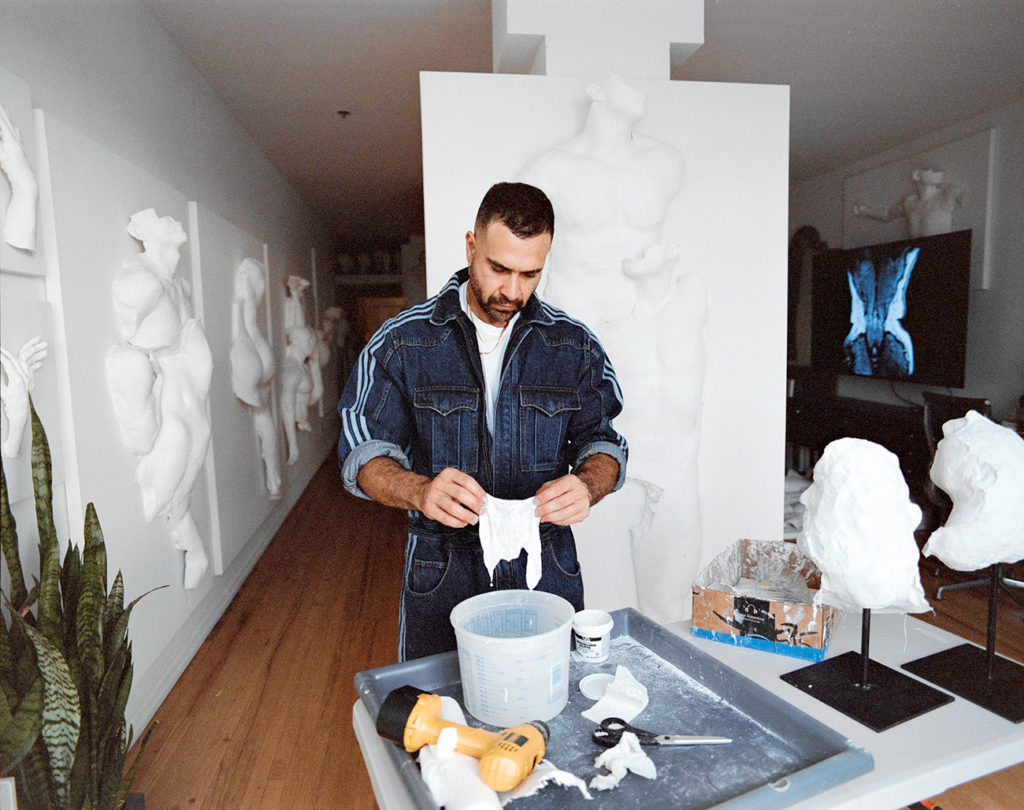How I live: inside sculptor Andreas Anastasis’s minimalist live/work loft in New York
By: Betty Wood
How I live: inside sculptor Andreas Anastasis’s minimalist live/work loft in New York

Clean lines and golden light imbue his work and lifestyle
Words Mariella Agapiou
Photography & film Maxwell Schiano
It took the complete and utter stillness of the Palm Springs desert for Andreas Anastasis to connect with his identity as an artist back in the summer of 2019. 'The silence triggered something,' explains the New Yorker, ‘and I realised if I'm given space, it does something to my creativity.'
But space doesn’t necessarily mean square footage for the artist. His West Side apartment – which he moved into during the first wave of Covid lockdowns – occupies a small footprint, with furniture and design kept to a minimum to recreate the quietness of the desert. Much of the loft is left free as a studio, where he creates ethereal sculptures that depict the human body in twisted yet tactile forms.
These haunting sculptures were exhibited at Manhattan’s Laverdin Fine Arts Gallery during the summer, sealing his emergence as a fully-fledged artist, and reigniting his love of the city.
‘I was so ready to leave New York. And now I feel like I’ve fallen in love with it all over again,’ he says. ‘[It has] sun, sky, water. All the elements that I feel like my spirit needed.’
Born in South London to immigrant Greek Cypriot parents, Anastasis always had a passion to create and work with his hands. 'Being creative is definitely something that's in my DNA,' he continues. ‘My mom, being a hairstylist, and my dad, a shoemaker. Being surrounded by that definitely inspired me, but being dyslexic and having trouble with school, creating was my only outlet and source of freedom.'
Anastasis went on to study fashion design and technology at London College of Fashion before following in his mother’s footsteps as a hairstylist, which would eventually lead him to America. The relocation was strategic, career-wise, but it was also heavily personal. 'It was more about my sexuality. I found an opportunity to move somewhere no one knew me. Somewhere I could be authentically myself.'
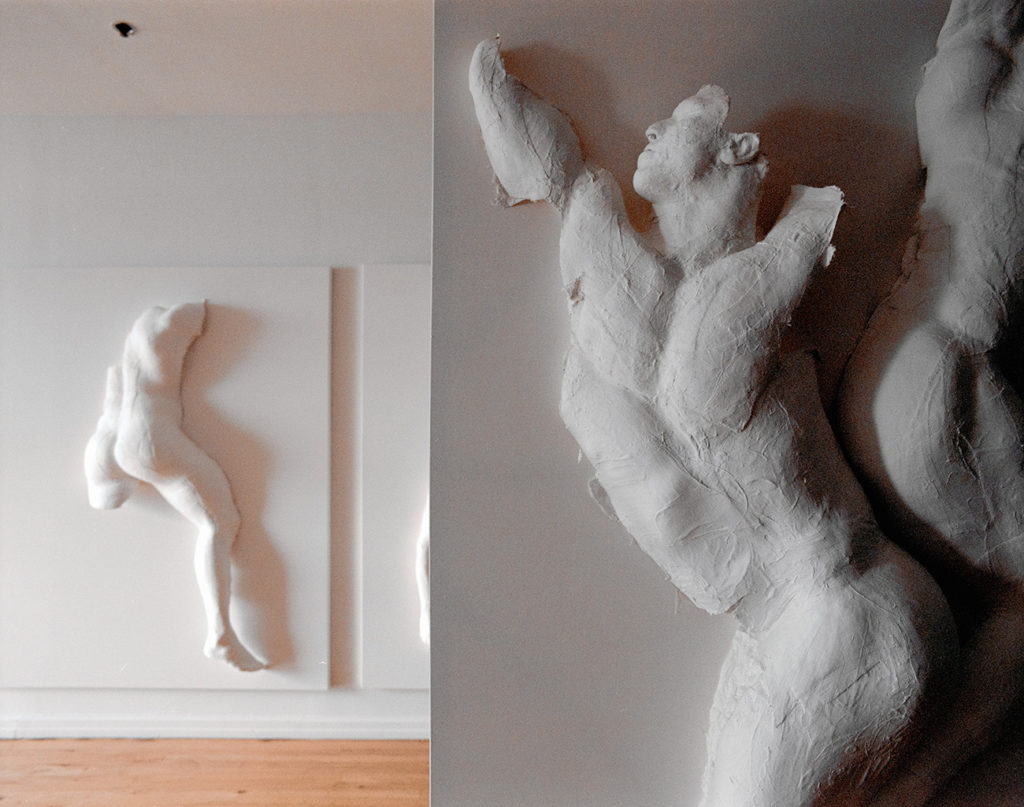
“The white walls, the light — they act as a blank canvas so I can create”
Anastasis’s list of accolades starts with his salon in the West Village, where he manages a small team and serves as Anna Wintour’s first hairstylist, which means he’s an integral part of the fashion queen’s entourage. But this has been a launchpad for other creative endeavours, including award-winning stints behind the camera and a move into sculpture.
In 2012 short film, Beast or Raven was the recipient of several awards, including Best Short Film at the Milan Film Festival, and Best Director of a Short Film in Berlin. Documenting the tics of a middle-aged heroin addict struggling with OCD, anxiety and depression, the film is an intimate exploration of the dark obsessions of a mentally ill man. And then there are his photography and music videos; most notably directing ‘Sublime’ by RuPaul’s Drag Race Season 3 winner Raja.
After his DECONSTRUCTED show in Manhattan, Anastasis quickly began to receive praise from the online world, selling most of his initial pieces to collectors from Germany, London and places such as Louisiana and Texas. 'They had seen my body of work, in the sense that they’ve seen my film, now that I’m doing this, they see the progression, and I’m just blown away really, that these people want to invest in me.'
Tell me about the first time you realised that you wanted to move away from hair, and try something else?
After a while, hair didn’t challenge me creatively — it became quite monotonous. It just became a daily thing and I was thankful for it, but it didn't change me creatively. And so I dabbled with photography and film, and that fed my creativity. That's what got me excited.
In 2019, when I took that trip out to the desert, that was my biggest breakthrough. I had never experienced silence like that before [because] I live in the city. I didn't hear any distractions from noises or cars and people. That's when I was able to start creating properly.
Do you think lockdown amplified that?
Yes. Lockdown was definitely how I got into my sculpture because I finally had the space to do it. I was working with plaster — I love working with plaster. I love the texture of it. I started experimenting with plaster and canvas, and through meditation and energy work, I visualised how I saw my work going, and then I was able to execute it. It was actually very organic.
I don’t really know where it comes from, I just know this is what I’m supposed to be doing. It's very ritualistic. It's not very ego-driven.
During the first lockdown you moved from a one-bedroom apartment in Chelsea to an open-plan loft on the West Side — did you know you needed a minimalist live/work space to thrive?
Originally I thought I would find two spaces: an apartment to live in and a studio to work in. But when I was asked what my goal, my ultimate situation would be, I'd be like, well, a huge loft, you know, where I can work and live from. The white walls, the light — they act as a blank canvas so I can create.
And that’s echoed in the sculptures because when you look at them, they’re all super clean. Purist, even. You could also argue your work reflects your clean, purist lifestyle: you eat healthily, you're vegan, you work out extensively…
Exactly, yes. And after every session, I have to clean the apartment — it’s part of my process. It’s almost a ritual: before I can start another piece, the place has to be spotless, everything has to be clean.
